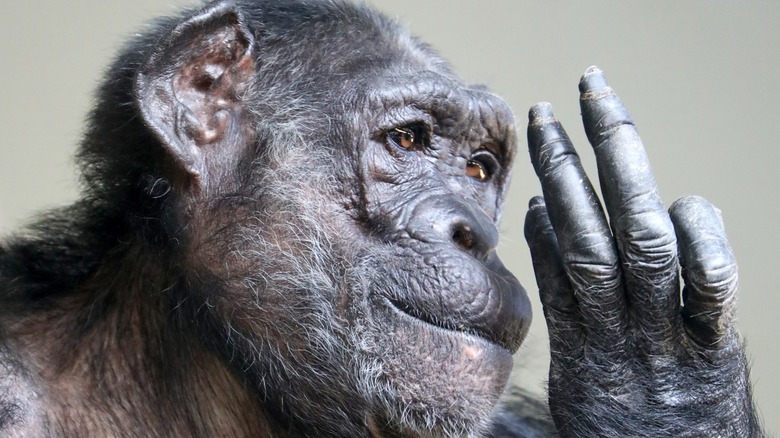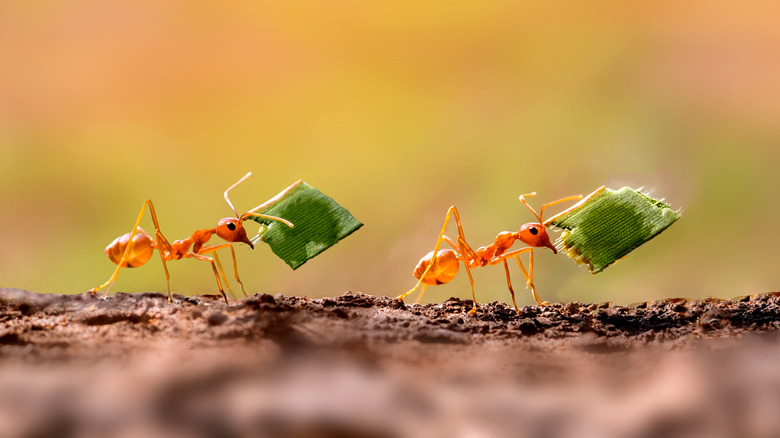Animals Can Understand Numbers A Lot Better Than You Think
When toddlers learn to count, they are first just mimicking the number sequence, as they are with language. Without understanding the numerical significance, they recount, "one, two, three," just as their parents show them when demonstrating the sides of a square, or the chickens in a row, per BBC News. Eventually, around the age of four, they activate the area in the brain responsible for placing numerical values on things, located in the right superior parietal lobe, according to Scientific American. On the other hand, judging numerical values is often based on language rather than actual mathematical calculations — like when you name and quantify a romantic relationship as "a couple" — and this sort of counting activates different parts of the brain.
While counting may seem like a basic function, it's actually quite complex. That being said, it's amazing how many species of animals — in addition to humans — are up to the task.
An arithmetic test
According to Quanta Magazine, "practically every animal that scientists have studied" has some sense of quantity in their brains. The concept of numerosity, in which animals distinguish that two is different from 30 or one is different from 10, has been identified in everything from insects to amphibians to birds to mammals (via Quanta Magazine). Monkeys, honey bees, and crows have even been shown to understand the concept of zero.
But, while many understand this concept of numerosity, a few have also been shown to take it to the next level with arithmetic. In one study, honey bees were rewarded and trained to link symbols with numbers and count them in ascending order (via Quanta Magazine). In a similar experiment, chimpanzees did the same thing, as if they were students in preschool. Actually, a chimpanzee was trained in another experiment to add the number of individual chocolate pieces together in different bowls, and rewarded with the larger chocolate portion when their calculations were correct (via BBC News).
A trigonometry test
Ants have been shown to perform exceptionally well on math tests by demonstrating their ability to communicate through a sort of "hive mind" as well as through their pheromones (via Futurism).
According to BBC News, the ants of the Tunisian desert have demonstrated their ability to perform trigonometry when finding their way back to the nest after gathering food. Scientists wondered how they were successfully calculating their return trip home, because the landscape of the desert is scarce, with no visual or olfactory landmarks for the ants to reference. To study this, they attached pig hairs to the ants' legs — which functioned like stilts — to make them travel further than they thought they would. What they found was that the ants were calculating the distance they walked through the "angle of their path relative to the position of the sun," per BBC News. It showed that, with a fraction of the brain power of humans, the ants were performing trigonometry not taught to human children until high school.


